This is a list of museums in the Democratic Republic of the Congo .
This is a list of museums in the Democratic Republic of the Congo .

Kinshasa, formerly Léopoldville, is the capital and largest city of the Democratic Republic of the Congo. Once a site of fishing and trading villages situated along the Congo River, Kinshasa is now one of the world's fastest growing megacities.

The Pool Malebo, formerly Stanley Pool, also known as Mpumbu, Lake Nkunda or Lake Nkuna by local indigenous people in pre-colonial times, is a lake-like widening in the lower reaches of the Congo River. The river serves as the border between the Republic of the Congo on the north and the Democratic Republic of the Congo to the south.

Lubumbashi is the second-largest city in the Democratic Republic of the Congo, located in the country's southeasternmost part, along the border with Zambia. The capital and principal city of the Haut-Katanga Province, Lubumbashi is the center of mining in the region, acting as a hub for many of the country's largest mining companies. No definite population figures are available, but the population of the city's urban area is estimated to be around 2,584,000 in 2021.
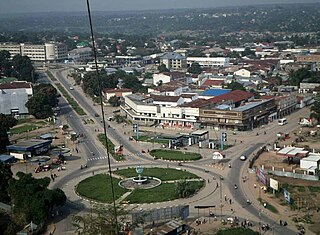
Kananga, formerly known as Luluabourg or Luluaburg, is the capital city of the Kasai-Central Province in the Democratic Republic of the Congo and was the capital of the former Kasaï-Occidental Province. It is the fourth most populous urban area in the country, with an estimated population of 1,524,000 in 2021.
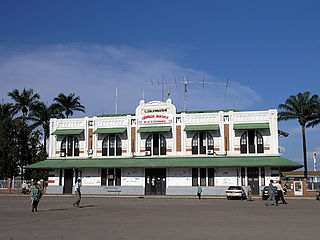
The Société Nationale des chemins de fer du Congo is the national railway company for the inland railways of the Democratic Republic of the Congo.

Barumbu is a municipality (commune) in the Lukunga district of Kinshasa, the capital city of the Democratic Republic of the Congo.
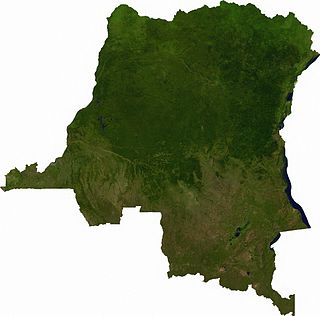
Articles related to the Democratic Republic of the Congo include:

Air Zaïre was the national airline of Zaire. Its head office was located on the grounds of N'djili Airport in Kinshasa.

Lovanium University was a Catholic Jesuit university in Kinshasa in the Belgian Congo. The university was established in 1954 on the Kimwenza plateau, near Kinshasa. The university continued to function after independence until it was merged into the National University of Zaire in 1971. It can be considered an antecedent of the University of Kinshasa.

Mass media in the Democratic Republic of the Congo are both nationally and internationally state owned and operated.
The following is a timeline of the history of the city of Kinshasa, Democratic Republic of the Congo.
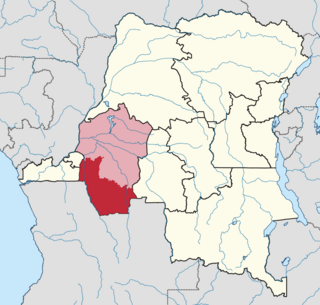
Kwango District was a district of the Congo Free State, Belgian Congo and the Democratic Republic of the Congo. It went through various changes in extent. It roughly corresponded to the present provinces of Kwilu and Kwango.
The following is a timeline of the history of the city of Lubumbashi, Democratic Republic of the Congo.
The following is a timeline of the history of the city of Kisangani, Democratic Republic of the Congo.

The National Museum of the Democratic Republic of the Congo is a museum for the cultural history of the numerous ethnic groups and historical epochs of the Democratic Republic of the Congo in the capital Kinshasa. It was officially handed over to the Congolese government by representatives of the Republic of Korea in June 2019.
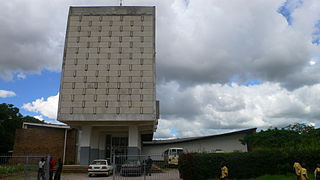
The National Museum of Lubumbashi is a museum with core collections in archaeology and ethnography in Lubumbashi, Haut-Katanga Province in the Democratic Republic of the Congo. It was founded in 1946.

Marcel Maquet was a Belgian colonial administrator who became commissioner of Stanleyville Province in 1940, then governor of Léopoldville Province in 1943.
Count Albert-Émile de Beauffort was a Belgian colonial administrator.
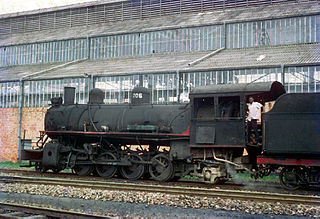
The Compagnie du chemin de fer du bas-Congo au Katanga (BCK) was a railway operator in the Congo Free State, Belgian Congo and later in the Democratic Republic of the Congo and Zaire. Most of the lines were in the southern Katanga Province, with links to the Kasai River for transport of mineral exports down to Kinshasa and onward to the port of Matadi, and a link to the Angolan railway network for transport to Lobito on the Atlantic.
The Société des Chemins de fer Katanga-Dilolo-Léopoldville (KDL) was a railway concession owner in the Congo Free State, Belgian Congo. The network was built, maintained and operated by the Compagnie du chemin de fer du bas-Congo au Katanga (BCK).